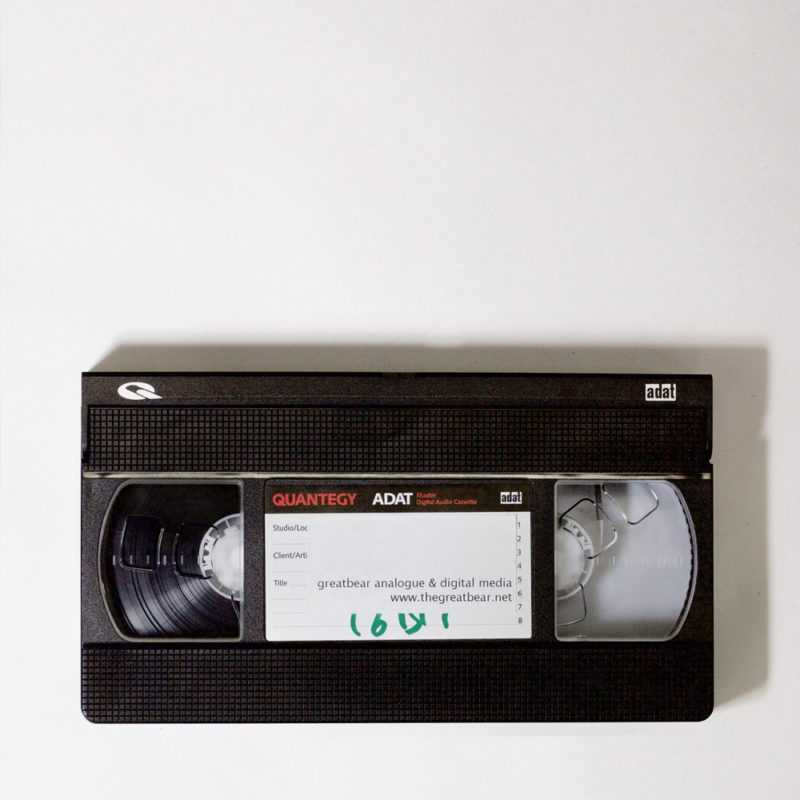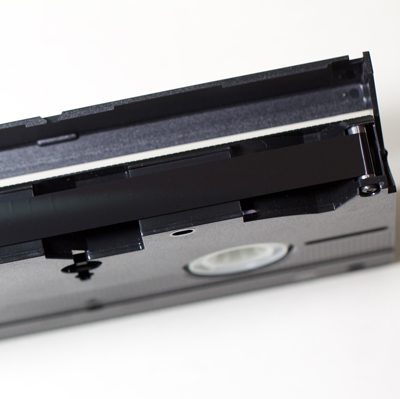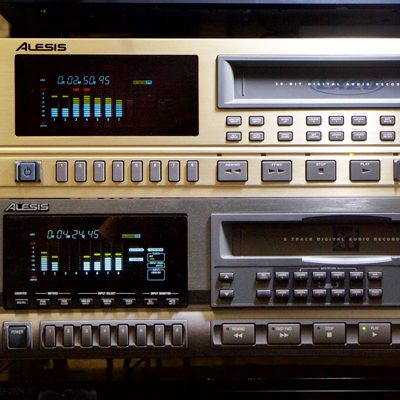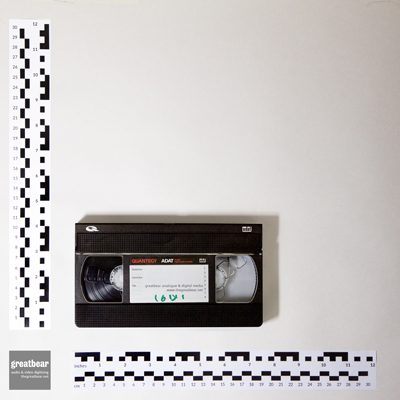introduction to ADAT transfer
Alesis Digital Audio Tape or ADAT is a magnetic tape format used for the simultaneous digital recording of eight digital audio tracks on to Super VHS (S-VHS) tape.
At Greatbear, we carefully restore and digitise 16-bit (Type I) and 20-bit (Type II) ADAT 8-track tapes, as well as sessions with higher track counts spanning multiple tapes.
As a born-digital format, ADAT recordings are best transferred at their native sample rate and bit depth.
We offer a range of delivery formats for our audio transfers. Following International Association of Sound and Audiovisual Archives TC-04 guidelines, we deliver high resolution Broadcast WAV files, together with MP3 audio file or audio CD listening versions. We're happy to create any other digital audio files, according to your needs.
We can provide the appropriately-sized USB delivery media for your files, or use media supplied by you, or deliver your files online. Files delivered on hard drive can be for any operating system - MacOS, Windows or GNU/Linux and filesystems (HFS+, NTFS or EXT3).
ADAT recordings vary in duration and in the extent of physical tape degradation, so we always assess tapes before confirming the price of a transfer.
We offer free assessments - please contact us to discuss your project.
ADAT machines
Like DTRS recorders, ADAT tape recorders use a video tape transport but running at a much faster speed (95.3 mm/sec which is circa 4 times the speed of VHS SP (PAL) format). Unfortunately most ADAT machines used a consumer tape transport that was not particularly rugged, often causing tape lacing problems which will damage tape. The later M20 machines used a much higher-quality transport.
The ADAT format was based on a VHS transport but even so, machine parts will not be available forever and key spares like the upper and lower head drum, while generally long-lasting will wear and replacements are very difficult to find.
Our ADAT machines include:
- Alesis ADAT XT
- Alesis ADAT M20
- Alesis ADAT LX20
ADAT format variation
| ADAT Type | sample-accurate digital transfer supported | digital transfer of sessions larger than 8 tracks supported | timecode preservation in Broadcast WAV file supported |
|---|---|---|---|
| ADAT Type I (16-bit) | ✓ | ✓ | ✓ |
| ADAT Type II (20-bit) | ✓ | ✓ | ✓ |
ADAT risks & vulnerabilities
While ADAT machines use standard S-VHS tapes, there are some issues which are specific to this multitrack digital format:
- The tapes run at around 4 times the standard VHS tape speed, so transports can wear out quickly.
- While expensive new, most ADAT machines used a transport common to domestic VHS machines, which do not respond well to heavy use.
- Direct digital transfer is preferable for making transfers, but this can be tricky without specialist hardware - especially when transferring multiple session tapes (16, 24, 32, 48 track sessions).
- While good quality VHS tapes could be used, S-VHS tapes were always recommended and the machines could be sensitive with some brands and exhibit high error rates.
- Some of the 'pro' branded ADAT recommended tapes like Panasonic RT-DA44 can actually degrade more over time than other SVHS tapes.
ADAT / S-VHS specific tape brands / models
- Ampex 489
- HHB ADAT45
- JVC SE-180 SV
- Panasonic RT-DA44
- Quantegy DM 42
ADAT recording history
The first ADAT machine was released in 1991 and had a major impact on the recording industry and home recording. Like the DA models released by TASCAM, a major benefit was that they could be synchronised with other machines, allowing for people to build their recording capacity 8 tracks at a time.
The ADAT format’s use of ½ inch S-VHS video tape meant that the larger tape width was less susceptible to damage than the 8mm Hi8 tapes used by the DA-88 and DTRS. The S-VHS tapes could record 40 minutes and because 8 tracks of audio require a large amount of bandwidth, the tape moved up to four times the speed of the average VHS tape.
ADAT is still used in some industries including the recording industry, though it has to a large extent been replaced by Digital Audio Workstations (DAWs).
The term 'ADAT' was subsequently also used for the Alesis ADAT HD24-XR, which featured hard disk recording rather than the traditional tape-based ADAT (now considered obsolete), but this machine too has now been discontinued.





